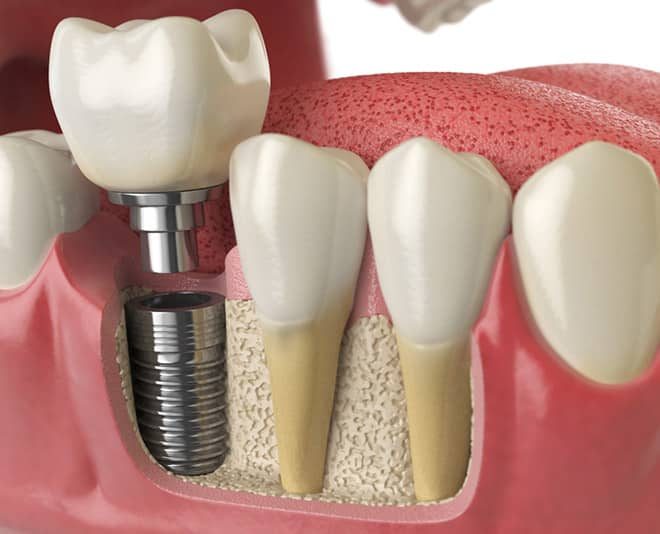

Dental implants, crowns and bridges are restorations that correct dental conditions while protecting and strengthening your teeth.
A dental implant is an artificial tooth root that is placed into your jaw to hold a replacement tooth or bridge. Dental implants may be an option for people who have lost a tooth or teeth due to periodontal disease, an injury, or some other reason.
A dental crown is custom-made to fit over a damaged natural tooth. It restores the function of the tooth and provides strength and support. Dental bridges replace missing teeth. Crowns and bridges are usually made of porcelain because of its natural appearance and durability.
Everyone wants a healthy, complete smile, and crowns and bridges can help. Updated techniques and treatments have made placing crowns and bridges easier than before. To find out if this treatment is suitable for you, book a consultation at Casuarina Dental.
A dental bridge is used to fill the space left by a missing tooth. The bridge is usually made as a single unit that is held in place by crowns on adjacent teeth. A dental bridge improves the appearance of your smile and also prevents surrounding teeth from shifting out of place and moving into the space left by a missing tooth.
A dental implant is a surgical fixture that is placed into the jawbone and allowed to fuse with the bone over the span of a few months. The dental implant acts as a replacement for the root of a missing tooth. In turn, this “artificial tooth root” serves to hold a replacement tooth or bridge. Having a dental implant fused to the jawbone is the closest thing to mimicking a natural tooth because it stands on its own without affecting the nearby teeth and has great stability.


A dental crown or bridge can usually be placed in two or three visits to our clinic in Casuarina. First, we prepare your natural tooth to receive the restoration and then impressions are taken of your teeth. The impression accurately represents the position of your natural teeth so that your restoration fits correctly.
The impressions are sent to a special dental lab, where they are used to create your permanent restoration, which usually takes about two weeks. Before you leave our practice, we fit you with a temporary bridge or crown that you wear while the new crown or bridge is designed.
Once the restoration is finished, we will book an appointment for you to return to our clinic. At that time, we check the final restoration for proper fit, making adjustments as necessary. Finally, the restoration is cemented permanently into place.
Before you leave our surgery, we will give you instructions on caring for your new restoration. The restoration is fully functional, but you should remember that it requires special care to prevent damage and the need for replacement. If you practise proper oral hygiene and schedule regular dental cleanings, your new restoration will last for many years.
This procedure is a team effort between you and your dentist. Your dentist will consult with you to determine where and how your implant should be placed. Depending on your specific condition and the type of implant chosen, your dentist will create a treatment plan tailored to meet your needs.
They may be made of titanium, which is lightweight, strong and biocompatible, which means that it is not rejected by the body. Titanium and titanium alloys are the most widely used metals in both dental and other bone implants, such as orthopaedic joint replacements. Dental implants have the highest success rate of any implanted surgical device.

Any surgical or invasive procedure carries risks. Before proceeding, you should seek a second opinion from an appropriately qualified health practitioner.
Modern dental materials and technology have dramatically improved the appearance of dental crowns and bridges. The porcelain used in today’s crowns and bridges can be colour-matched to blend perfectly with the shade of your natural teeth. With proper placement, your dental restoration should be virtually indistinguishable from your natural teeth.
One of the major differences between dental implants and a partial denture is that dental implants are a permanent solution while a partial denture is not. Additionally, implants fuse to the jawbone which provides added stability and support for the new tooth. Partial dentures, on the other hand, rely on suction or bonding agents to stay in place.
